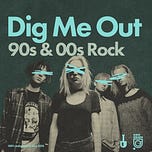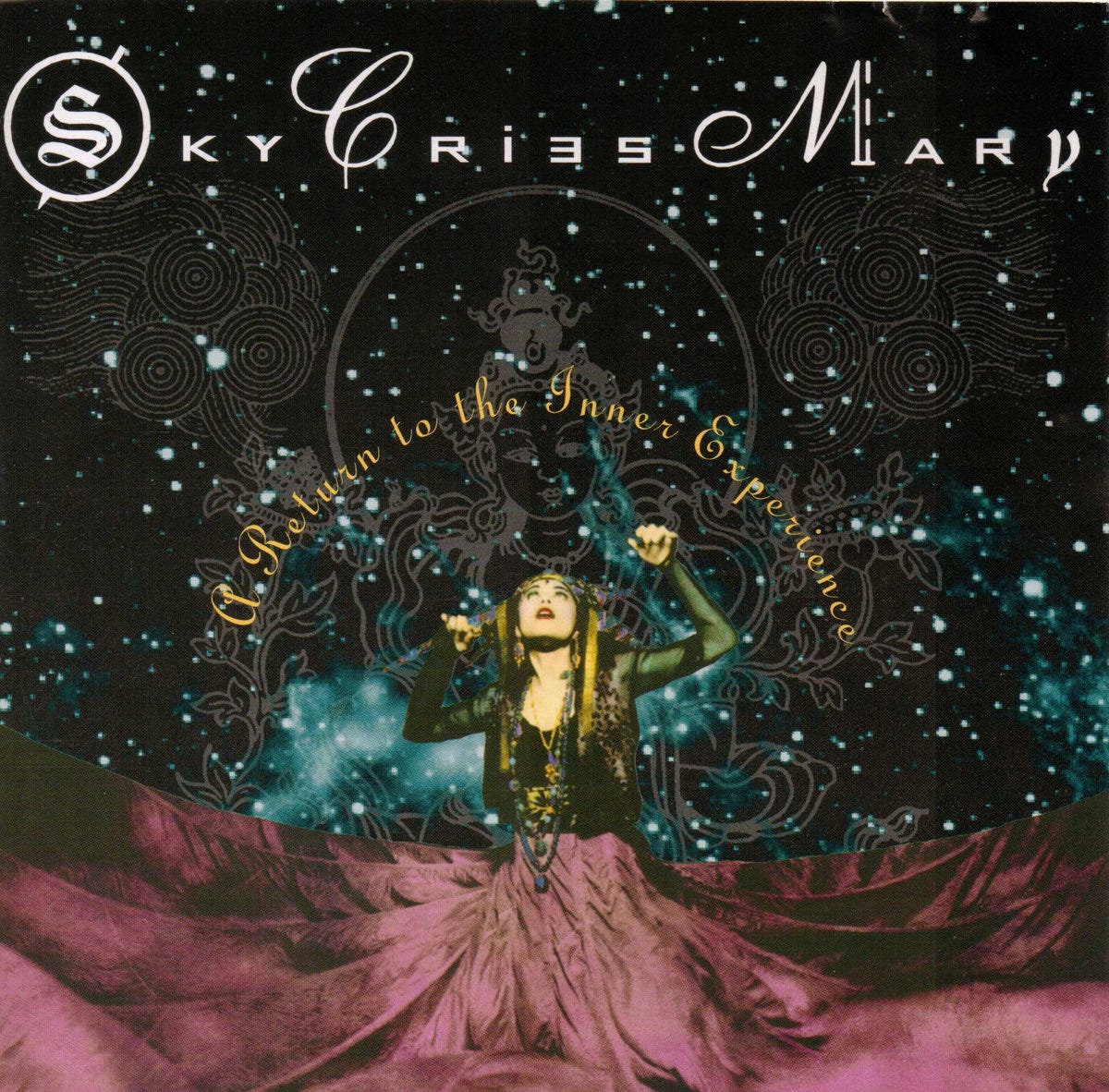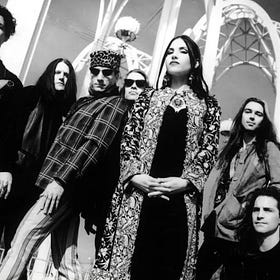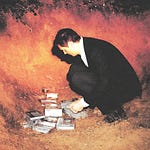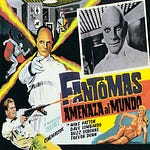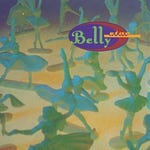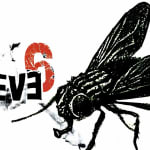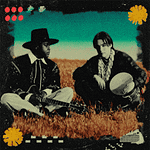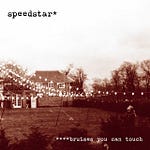In our latest 90s rock album tournament, Sky Cries Mary’s “A Return to the Inner Experience” emerged victorious. Thanks to Eric Peterson for nominating this 1993 psychedelic odyssey that showcased the band in the Tank Girl soundtrack.
The competition was fierce: Meet John Doe’s solo effort (Keith Miller), Hagfish - Rocks Your Lame Ass (Eric Lauderdale), and AC/DC’s Ball Breaker (Patrick Testa) all put up strong fights. But our Patreon and Substack communities chose to dive deep into Seattle’s most unmarketable major label experiment.
Ready to champion your own deep cut? Suggest an album for the full Dig Me Out treatment. Your suggestion could be our next episode.
You’re wandering through Tower Records in 1993, fingers trailing past the usual suspects in the Alternative section. Nirvana dominates the endcaps. Pearl Jam owns prime real estate. Then your hand stops on something different—a Capitol Records release with Vaughn Oliver-style artwork that looks like it belongs in a completely different universe.
That was Sky Cries Mary. And if you were brave enough to take that album home, you discovered something that sounded like Jefferson Airplane crash-landing in a Berlin techno club.
The Art School Experiment That Refused to Stay in One Lane
Seattle in the late ‘80s wasn’t just brewing coffee and grunge. While Sub Pop was documenting three-chord revolution, art student Roderick Wolgamott was conducting sonic experiments that started as his senior thesis—described as “Dada-esque cacophony” that served as “an endurance test for local hipsters”. What began as industrial noise alongside future Posies members Jon Auer and Ken Stringfellow evolved into something nobody could categorize.
By 1993, Sky Cries Mary had assembled a seven-piece collective featuring DJ Fallout on turntables and samplers, Joseph E. Howard handling double bass and sitar, and the husband-wife vocal duo of Roderick and Anissa Romero weaving ethereal harmonies over hypnotic rhythms. This wasn’t your typical Seattle band lineup.
Their album A Return to the Inner Experience opens with what sounds like Enya meeting Enigma at a meditation retreat. Then, without warning, the third track drops a drum beat lifted straight from Grandmaster Flash’s “White Lines.” By the fifth track, they’re covering the Rolling Stones’ “2000 Light Years from Home.” And somehow, impossibly, it all coheres into a singular vision.
Genre-Bending as Spiritual Practice
What made Sky Cries Mary fascinating wasn’t just their willingness to genre-hop—it was their ability to make those disparate elements feel like parts of the same cosmic ritual. The album flows from new-age ambience to R&B grooves to gothic atmospherics to psychedelic jams, yet it never feels scattershot. Instead, it creates the sensation of being guided through different chambers of the same otherworldly temple.
The production, handled by veteran Joe Gastwirt (who’d worked with the Grateful Dead, Tom Petty, and ELO), gave these experimental soundscapes the expansive treatment they deserved. Every element—from the tabla rhythms to the mellotron swells to the dual vocals that sometimes locked in harmony and sometimes called and responded—was given room to breathe in the mix.
Critics struggled to find comparisons. The closest parallel might be the Mars Volta’s later genre-deconstructions, but Sky Cries Mary arrived a decade early, when alternative music was still an “open book” where rock could become anything. They represented one possible future for the genre—one that prioritized atmosphere over aggression, transcendence over angst.
The Beautiful Failure of Ambitious Art
Here’s the catch: A Return to the Inner Experience clocks in at over an hour, with some tracks stretching past eleven minutes. The album’s second half loses focus, becoming more concerned with creating headspace than songs. It’s the kind of record that works perfectly as background music for late-night contemplation but demands too much patience for active listening.
Both the experimental spirit and indulgent runtime reflect the early ’90s moment when major labels were signing anything that seemed “alternative”. Capitol Records released this cosmic oddity with no clear marketing strategy—how do you promote something that sounds like psychedelic Meat Loaf one moment and ambient techno the next?
The album never received a vinyl pressing, despite seeming tailor-made for the ritualistic experience of dropping the needle on a double LP. It existed in the CD era’s liminal space between accessibility and art, never quite finding its intended audience.
Legacy of the Cosmic Collective
What’s remarkable is that Sky Cries Mary didn’t disappear after their major label experiment. They’ve continued releasing albums consistently, with their most recent, Immortal Jellyfish, arriving in 2025. The band became a Seattle institution, a rotating collective that’s included members from TAD, Love Battery, Candlebox, and even Yes.
They represent the path not taken—what might have happened if alternative rock had embraced electronic experimentation and Eastern mysticism instead of settling into post-grunge formulas. While their contemporaries conquered MTV, Sky Cries Mary built their own sustainable universe parallel to the mainstream, creating music for the seekers who wanted something more transcendent than another power chord progression.
A Return to the Inner Experience stands as a fascinating document of early ‘90s possibility—when a band could get signed to Capitol Records for making music that sounded like nothing else on earth. It’s imperfect and indulgent, but it’s also fearless in ways that feel increasingly rare.
For the full deep-dive into Sky Cries Mary’s cosmic journey—including track-by-track analysis, band history, and the complete discussion of what works (and what doesn’t) on this ambitious experiment—check out the complete conversation on Dig Me Out podcast.
Sky Cries Mary | History of the Band
Seattle, 1989. While Sub Pop was busy documenting grunge’s noisy birth, art student Roderick Wolgamott Romero had different plans. He wasn’t interested in three-chord anthems or teenage angst—he wanted to create sonic séances. What started as industrial noise experiments with Posies members Jon Auer and Ken Stringfellow would evolve into something nobod…
Massive Attack - Mezzanine | 90s Rock Revisited
The 1990s were a dynamic time for music, with various genres finding their way into the mainstream, each bringing its own unique flavor. Among them, electronic music was making waves, with the hard-hitting beats of The Prodigy and The Chemical Brothers leading the charge in electronica, while the darker, more experimental sounds of Nine Inch Nails and S…


